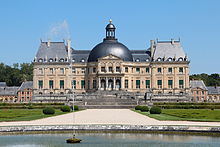
Back طبقة أرستقراطية Arabic ارستقراط ARZ Aristócrata AST Əsilzadəlik Azerbaijani Αριστοκρατία (τάξη) Greek آریستوکراسی (طبقه) Persian אריסטוקרטיה (מעמד) HE Aristokrasi (kelas) ID 貴種 Japanese არისტოკრატი Georgian


The aristocracy[1] is historically associated with a "hereditary" or a "ruling" social class. In many states, the aristocracy included the upper class of people (aristocrats) with hereditary rank and titles.[2] In some, such as ancient Greece, ancient Rome, or India, aristocratic status came from belonging to a military class. It has also been common, notably in African societies, for aristocrats to belong to priestly dynasties. Aristocratic status can involve feudal or legal privileges.[3] They are usually below only the monarch of a country or nation in its social hierarchy.[4] In modern European societies, the aristocracy has often coincided with the nobility, a specific class that arose in the Middle Ages, but the term "aristocracy" is sometimes also applied to other elites, and is used as a more general term when describing earlier and non-European societies.[5] Aristocracy may be abolished within a country as the result of a revolution against them, such as the French Revolution.
- ^ "Definition of Aristocracy". Archived from the original on 2019-03-26. Retrieved 2019-09-18.
- ^ Definition (2) of Aristocracy
- ^ The Aristocrats: a portrait of Britain's nobility and their way of life today, by Roy Perrott, (London 1968), pp. 5–10.
- ^ Native Wood Preservation Ltd, on British Aristocracy and Hierarchy
- ^ Modern European societies and the nobility of aristocracy
© MMXXIII Rich X Search. We shall prevail. All rights reserved. Rich X Search